Uganda is home to over half of the world’s remaining mountain gorillas, making it a premier destination for gorilla trekking adventures. Two national parks offer this incredible experience: Bwindi Impenetrable Forest National Park and Mgahinga Gorilla National Park. Both parks provide unique opportunities to encounter these magnificent creatures, but each offers distinct advantages depending on your preferences, fitness level, and travel goals.
Choosing between these two parks can be challenging, especially for first-time visitors. This comprehensive comparison will help you understand the key differences between Bwindi and Mgahinga, enabling you to make an informed decision for your Uganda gorilla safari adventure.
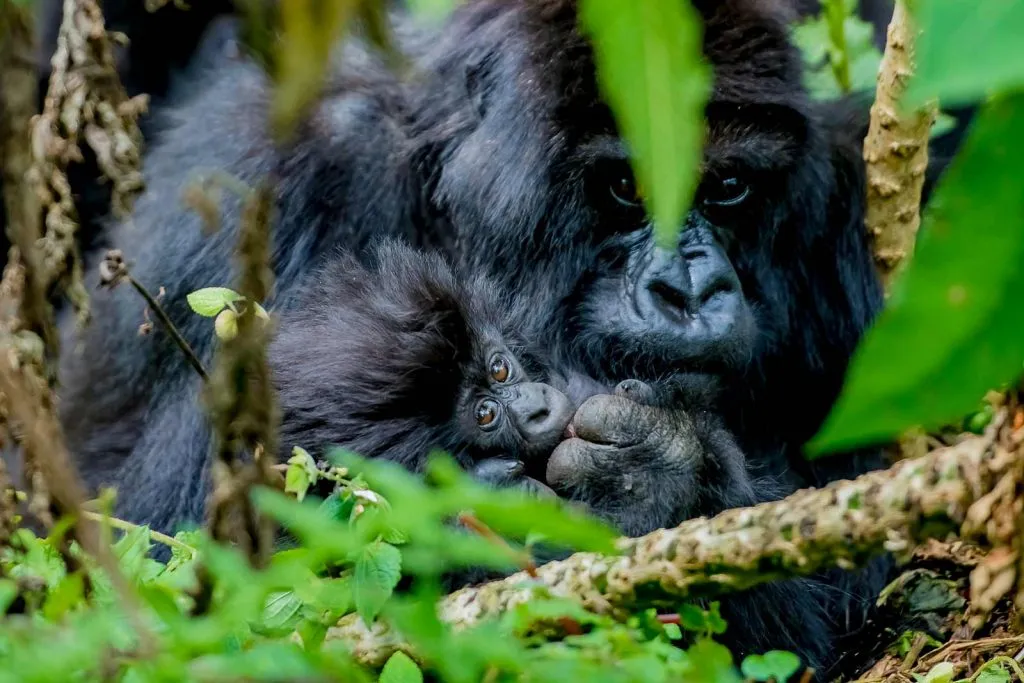
Overview of Both Parks
Bwindi Impenetrable Forest National Park
Bwindi Impenetrable Forest National Park is Uganda’s most famous gorilla destination and a UNESCO World Heritage Site. The park measures 331 km2, making it significantly larger than its counterpart. Established in the early 1990s, Bwindi is renowned for its incredible biodiversity and houses approximately half of the world’s mountain gorilla population.
The park is divided into four main sectors: Buhoma, Ruhija, Rushaga, and Nkuringo. Each sector offers different trekking experiences and varying levels of difficulty, providing options for travelers with different fitness levels and preferences.
Mgahinga Gorilla National Park
Mgahinga is a small park (33 km2) compared to Bwindi, but what it lacks in size, it makes up for in scenic beauty and unique experiences. Unlike Bwindi, Mgahinga is an extension or part of the greater Virunga region and conservation area which includes the Virunga National Park in Congo and the Volcanoes National Park in Rwanda.
The park is named after the three volcanic peaks that dominate its landscape: Mount Gahinga, Mount Muhabura, and Mount Sabinyo. The top attractions are the rare mountain gorillas and golden Monkeys, making it a diverse destination for wildlife enthusiasts.
Gorilla Families and Trekking Options
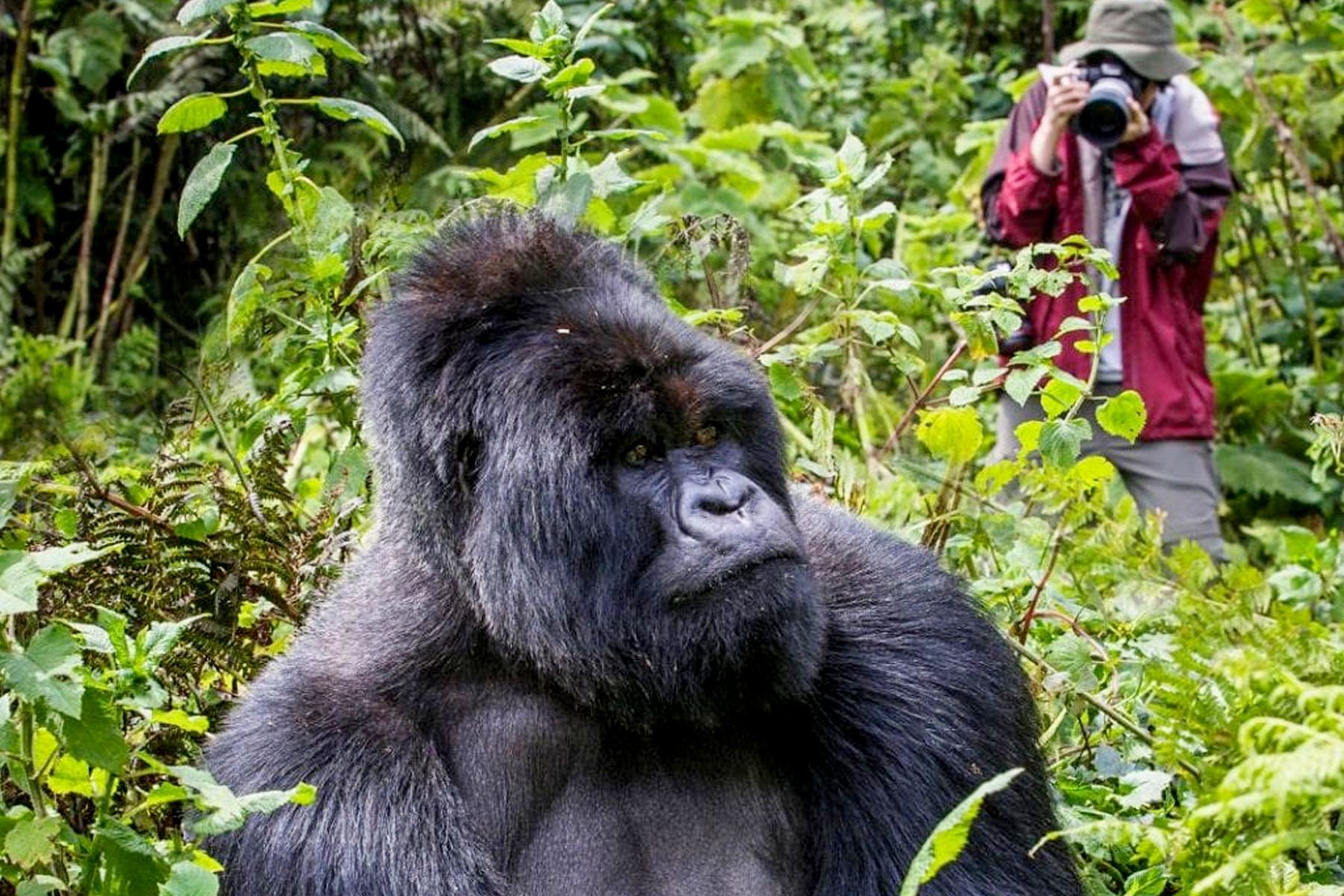
Bwindi’s Gorilla Families
Bwindi Impenetrable Forest National Park has more gorilla families open for trekking than Mgahinga National Park. The park currently has over 20 habituated gorilla families distributed across its four sectors, with multiple families available for daily trekking in each sector.
Bwindi offers more options for guests to choose whether they prefer shorter hikes or longer and steeper ones because of the variety of gorillas in different areas. This diversity allows visitors to select trekking experiences that match their fitness levels and time constraints.
Additionally, gorilla habituation is only done in Bwindi impenetrable national park. This exclusive 4-hour experience allows visitors to spend extended time with researchers and gorilla families, providing deeper insights into gorilla behavior and conservation efforts.
Mgahinga’s Gorilla Families
Mgahinga currently has one fully habituated gorilla family available for trekking – the Nyakagezi group. While this might seem limiting compared to Bwindi’s multiple families, it offers a more intimate and exclusive experience with fewer crowds.
The Nyakagezi family is known for its cross-border movements, sometimes traveling to neighboring Rwanda and Congo before returning to Uganda. This nomadic behavior adds an element of adventure and unpredictability to the trekking experience.
Permit Costs and Availability
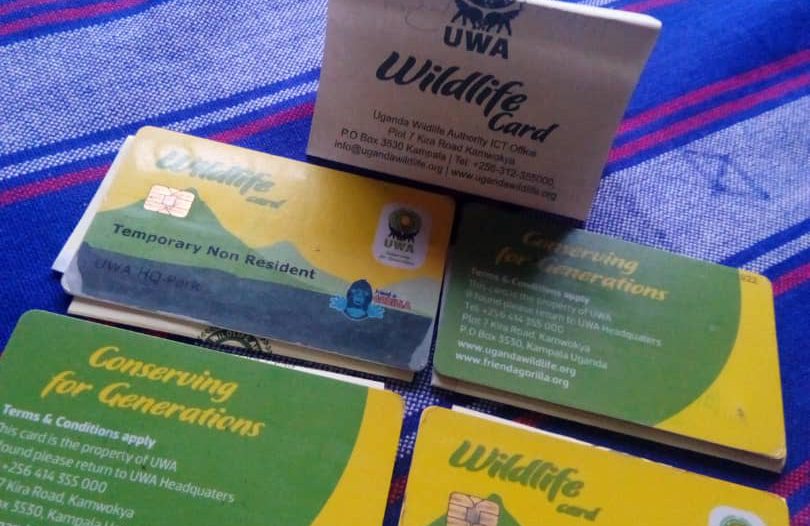
Gorilla trekking permits in both Bwindi and Mgahinga gorilla national parks cost 800 USD per person for foreign non-residents, 700 USD per person for foreign residents, 500 USD per person for Africans in 2025/2026. The pricing is standardized across both parks, so cost shouldn’t be a deciding factor.
However, permit availability differs significantly between the parks. Bwindi’s multiple gorilla families mean more permits are available daily, making it easier to secure bookings, especially during peak seasons. Mgahinga’s single family limits daily permits to 8 people, requiring advance booking and more flexible travel dates.
Trekking Difficulty and Terrain
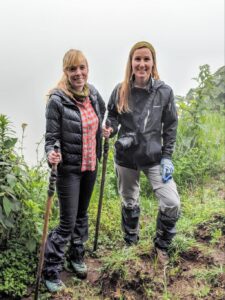 Bwindi’s Challenging Terrain
Bwindi’s Challenging Terrain
Bwindi provides a tougher but more diverse trekking experience. The park’s name “Impenetrable” reflects its dense forest cover and challenging terrain. Treks can range from 1-8 hours depending on the gorilla family’s location and the sector visited.
The park’s undulating hills, thick vegetation, and muddy trails during rainy seasons make it physically demanding. However, this challenging environment creates an authentic jungle experience that many adventurous travelers seek.
Mgahinga’s Scenic Accessibility
Mgahinga offers a more scenic and less strenuous trek compared to Bwindi. The park’s volcanic landscape provides stunning backdrops, and the generally more open terrain makes navigation easier.
The altitude in Mgahinga (2,227-4,127 meters) is higher than most of Bwindi, which can affect some visitors but also provides cooler temperatures and clearer mountain views. The trails are generally well-maintained and less muddy than Bwindi’s dense forest paths.
Additional Activities and Attractions
Bwindi’s Forest Experiences
Bwindi focuses primarily on gorilla-related activities, with some bird watching opportunities. The park is home to over 350 bird species, making it attractive to ornithologists. Forest walks, community visits, and cultural experiences with local Batwa communities are available.
The park’s four sectors each offer different community experiences, from traditional Batwa performances to modern community development projects that benefit from tourism revenue.
Mgahinga’s Diverse Adventures
Golden Monkey Trekking in Mgahinga gorilla national park is an active and exciting activity that sets it apart from Bwindi. Golden monkey trekking costs $60, minus the parking charge of $40, making it an affordable addition to your gorilla safari.
The park offers volcano hiking opportunities on all three peaks, with Mount Sabinyo being the most popular due to its tri-country summit where Uganda, Rwanda, and Congo meet. Hiking on the Batwa trail takes about 4 to 6 hours on the slopes of Gahinga volcano, providing cultural insights into the traditional forest dwellers.
Best Time to Visit
Seasonal Considerations for Both Parks
The dry months (June–September, December–February) are best for trekking. During these months, there is little rain, and the trails stay dry, making it easier to walk. Both parks can be visited year-round, but weather conditions significantly impact trekking experiences.
In the rainy months (March-May, November), the paths become muddy and slippery, making trekking more challenging. However, the rainy season offers lush vegetation, better photographic opportunities, and potentially lower accommodation rates.
Park-Specific Timing
Bwindi’s multiple sectors mean you can often find better weather conditions in at least one area, even during transitional seasons. Mgahinga’s higher altitude can mean cooler temperatures and different weather patterns compared to Bwindi.
Accommodation and Accessibility
Bwindi’s Accommodation Options
Bwindi offers luxury lodges and Buhoma Lodge among others, with each sector having various accommodation options from budget to luxury. The variety ensures options for different budgets and preferences.
Popular lodges include Buhoma Lodge, Mahogany Springs, Gorilla Safari Lodge, and Silverback Lodge, each offering unique experiences and locations within different park sectors.
Mgahinga’s Accommodation
Mgahinga has fewer accommodation options due to its smaller size and single trekking location. However, the available lodges like Mount Gahinga Lodge and Mucha Hotel provide quality service with stunning volcanic views.
The limited accommodation creates a more intimate atmosphere but requires earlier booking, especially during peak seasons.
Accessibility and Transportation
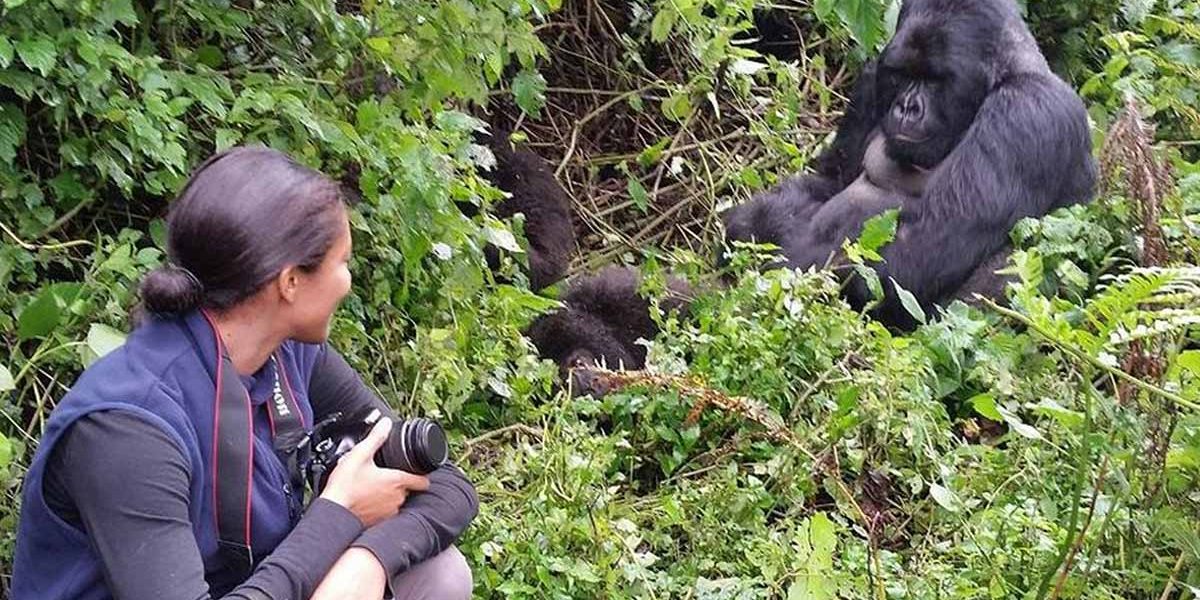
Getting to Bwindi
Bwindi’s four sectors offer multiple access points, with different routes from Kampala or Entebbe. The journey typically takes 8-10 hours by road, depending on the sector. Flight options to nearby airstrips are available for those preferring air travel.
Getting to Mgahinga
Mgahinga is accessible via a single route through Kisoro town. The journey from Kampala takes about 9-10 hours by road. The park’s proximity to Rwanda makes it accessible for travelers combining Uganda and Rwanda safaris.
Which Park Should You Choose?
Choose Bwindi If:
- You want multiple gorilla family options and better permit availability
- You prefer a more diverse trekking experience with varying difficulty levels
- You’re interested in gorilla habituation experiences
- You have limited time and want guaranteed gorilla sightings
- You prefer more accommodation and dining options
Choose Mgahinga If:
- You want a more exclusive, intimate gorilla experience
- You’re interested in golden monkey trekking and volcano hiking
- You prefer scenic mountain landscapes over dense forest
- You’re combining your trip with Rwanda or Congo visits
- You want additional adventure activities beyond gorilla trekking
Consider Both Parks If:
If time allows, visiting both parks gives you a well-rounded experience of Uganda’s gorilla conservation efforts and diverse ecosystems. A double gorilla trek allows you to experience different gorilla families and varied landscapes.
Planning Your Gorilla Safari
Booking Recommendations
Book permits at least 3-6 months in advance, especially for peak seasons (June-September, December-February). Bwindi offers more flexibility due to multiple families, while Mgahinga requires more advance planning.
Physical Preparation
Regardless of which park you choose, physical fitness is important. Regular hiking, cardiovascular exercise, and strength training will enhance your experience. Both parks require moderate to high fitness levels, though Mgahinga is generally less strenuous.
What to Pack
Essential items include waterproof hiking boots, rain gear, long pants, long-sleeved shirts, gardening gloves, and a daypack. A good camera with extra batteries and memory cards is crucial for capturing memories.
Conservation Impact
Both parks contribute significantly to mountain gorilla conservation and local community development. Your visit directly supports anti-poaching efforts, research programs, and community projects that provide alternative livelihoods to local people.
Tourism revenue helps fund park operations, ranger salaries, and conservation initiatives. By choosing either park, you’re contributing to the long-term survival of mountain gorillas and the preservation of their habit
To book a gorilla safari in Uganda’s Bwindi forest and Mgahinga national parks- simply contact us now by emailing to info@ugandasafaribookings.com or call us now on +256-700135510 to speak with the reservations team.
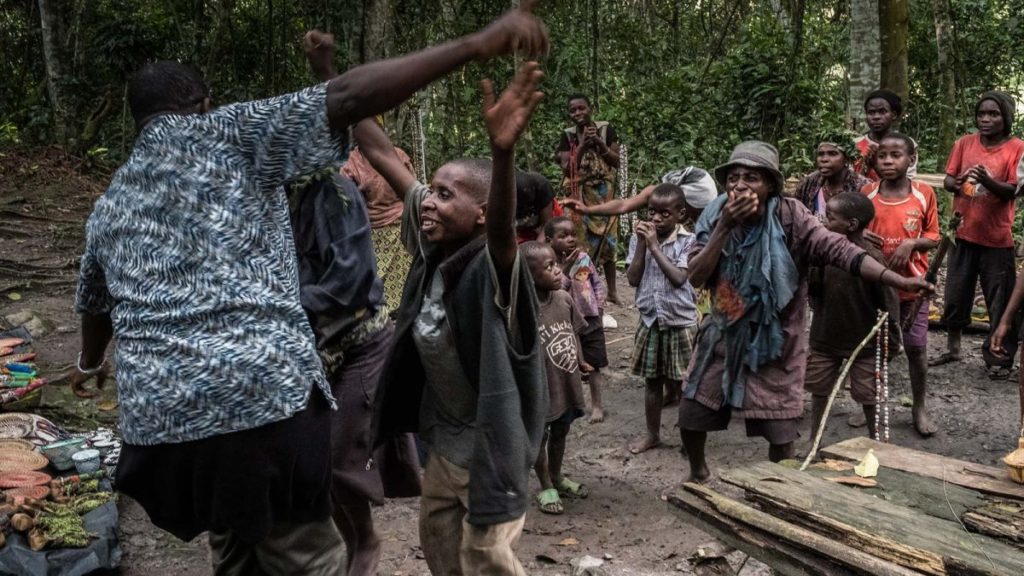
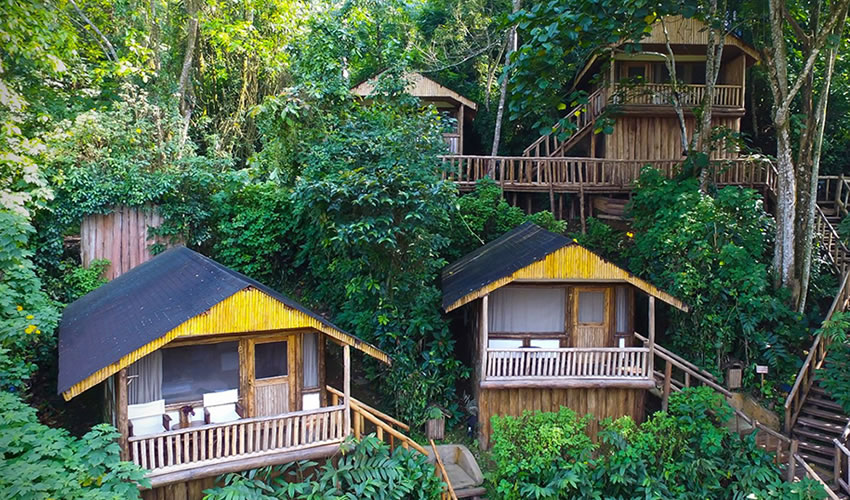
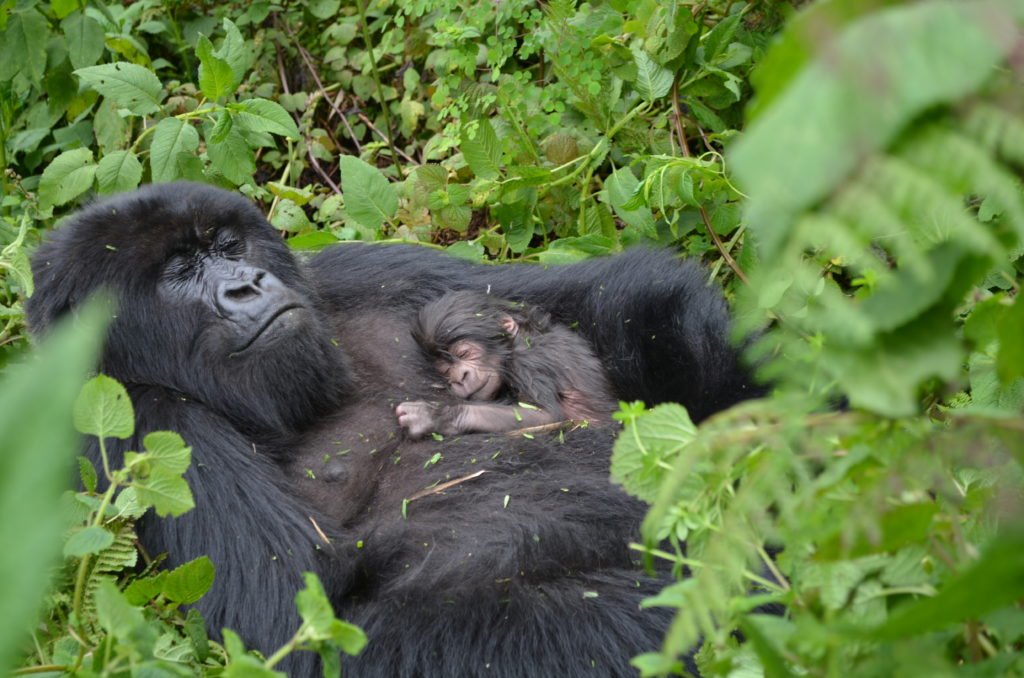
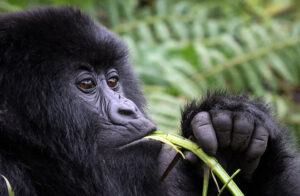
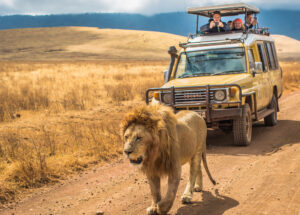
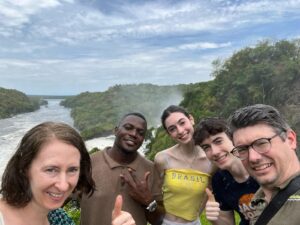

More Articles
Top 5 Interesting Things You Didn’t Know About Gorillas
Your Safari, Your Schedule: The Rise of Uganda Private Tours
Top 20 Most Popular Wild Animals In Uganda